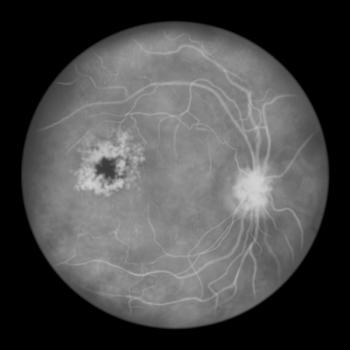
High LDL Cholesterol Associated With Earlier Progression in Synchronous Metastatic Colorectal Cancer
Key Takeaways
- High LDL-C in synchronous metastatic CRC is linked to colonic tumor localization and increased need for local treatments, impacting outcomes negatively.
- LDL-C contributes to CRC progression by modulating glucose and lipid metabolism and exacerbating inflammation, highlighting its role as a risk factor.
In patients with synchronous metastatic colorectal cancer treated without curative intent, high low-density lipoprotein (LDL) cholesterol was associated with poor survival.
Patients with high low-density lipoprotein cholesterol (LDL-C) who were newly diagnosed with synchronous metastatic colorectal cancer (CRC) had more frequent colonic localization of the primary tumor and a greater necessity of local treatments. This ultimately led to poorer outcomes, especially among those treated without any curative intent, according to study results published by investigators in the Journal of Gastrointestinal Cancer.1
High LDL-C is a Risk Factor for CRC Progression
Prior studies have determined risk factors that could promote the proliferation of colon cancer cells in patients with the cancer. LDL-C has been found to be one such risk factor among the multiple metabolic syndrome-related risks. In patients with CRC, LDL assists colon cancer cell proliferation through cellular glucose and lipid metabolism modulation. In addition, it exacerbates intestinal inflammation by modulating essential signaling pathways, helping progress CRC.2,3
Investigators of the current study sought to evaluate the association between serum LDL and clinicopathological parameters and the prognostic role of LDL in patients with synchronous metastatic CRC with or without curative intent. Most investigations of LDL in CRC to this point had centered around LDL levels and their correlation with CRC occurrence or analyses of preoperative LDL levels in relation to prognosis. Conflicting available data in this specific population and regarding LDL’s prognostic role make a proper analysis critical.1
Colonic Tumor Location More Frequent in Patients With High LDL-C
The retrospective analysis included those diagnosed with synchronous metastatic CRC in the investigator’s cancer center between 2019 and 2023. Patient response to first-line treatment was determined using the Response Evaluation Criteria in Solid Tumors (RECIST 1.1), while progression-free survival (PFS) and overall survival (OS) were also measured. Two patient groups were formed: those with normal LDL (130 mg/dL or less) and those with high LDL (greater than 130 mg/dL). In total, 90 patients were included in the analysis.1
The median LDL level across the entire study population was 135.5 mg/dL, while 44.4% (n = 40) and 55.6% (n = 50) were in the normal LDL and high LDL groups at diagnosis, according to baseline measurements found by the authors. The patient population was generally older, with a median age of 61; interestingly, 65.6% (n = 59) were male patients.1
Primary tumor location was observed to be more often colonic in the high LDL group compared with the normal LDL group (90% vs 67.5%, P = .009). Additionally, liver metastases—a key indicator of progression—were present in 90% of patients in the study. First-line systemic treatments and response rates were deemed similar between either group, but significantly, patients with high LDL-C more frequently necessitated local treatments, including metastasectomy (26% vs 2.5%, P = .002) and transarterial radioembolization/transarterial chemoembolization with radiofrequency ablation (RFA) (38% vs 17.5%, P = .033), according to the investigators.1
Survival Worse Among Those Treated Without Curative Intent
Moving to a survival analysis, the authors found that despite higher rates of resection and local treatments in the high LDL group, median PFS (10.03 months [mo] [95% CI, 6.97-14.77] vs 9.63 mo [95% CI, 7.93-14.00]; P = .872) and OS (20.87 mo [95% CI, 14.98-36.47] vs 17.63 mo [95% CI, 14.30-43.03] P = .925) were not different compared with patients in the normal LDL group.1
This result differed when examining patients specifically treated without curative intent, comprising 56.7% (n = 51) of the cohort. In a major development, patients with high LDL-C tended to have worse PFS (4.97 mo [95% CI, 3.00–7.73] vs. 8.43 mo [95% CI, 6.10–9.90], P = .048). Despite being clinically insignificant, patients with high LDL-C treated without curative intent had numerically worse OS compared with the normal LDL group (32.70 mo [95% CI, 19.37–51.07] vs 43.03 mo [95% CI, 17.63–74.27], P = .352).1
“Clinical heterogeneity of synchronous metastatic CRC necessitates an investigation of the role of LDL in this presentation,” the study authors concluded. “Further research with larger cohorts and longitudinal data is needed to confirm these findings and explore the underlying biological mechanisms.”1
REFERENCES
1. Akkus E, Öksüz NE, Utkan G, et al. Low-density lipoprotein (LDL) is associated with earlier progression in synchronous metastatic colorectal cancer treated with curative intent. J Gastroinest Canc. 2025;56(58). doi:10.1007/s12029-025-01166-3
2. Yang Z, Tang H, Lu S, et al. Relationship between serum lipid level and colorectal cancer; a systemic review and meta-alaysis. BMJ Open. 2021;12(6). doi:10.1136/bmjopen-2021-052373
3. Mayengbam SS, Singh A, Yaduvanshi H, et al. Cholesterol reprograms glucose and lipid metabolism to promote proliferation in colon cancer cells. Cancer & Metabolism. 2023;11(15). doi:10.1186/s40170-023-00315-1
Newsletter
Stay informed on drug updates, treatment guidelines, and pharmacy practice trends—subscribe to Pharmacy Times for weekly clinical insights.


























































































































































































































